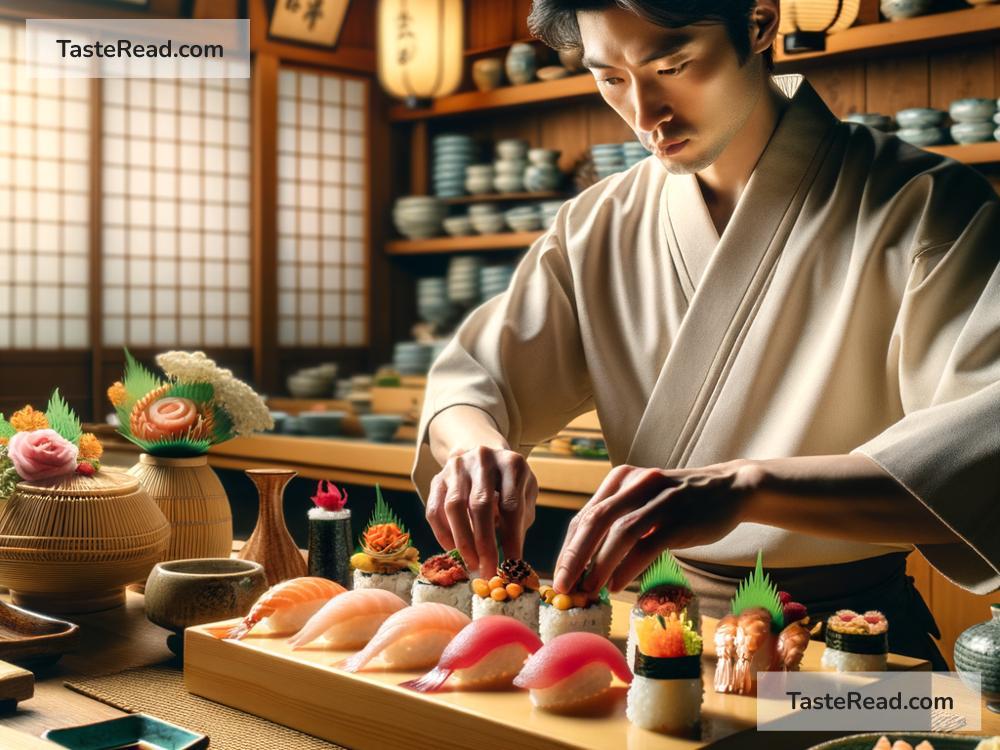Exploring Vibrant Sushi Traditions in Japan
Sushi is one of Japan’s most famous foods. It is enjoyed all around the world for its unique flavors and artistic presentation. But did you know that sushi has a long and fascinating history that dates back centuries? In Japan, sushi is more than just food—it’s a cultural tradition. Let’s explore the vibrant sushi traditions in Japan and learn about the types of sushi, its history, and how it is made.
The History of Sushi
Sushi started not as the fresh dish we know today but as a way to preserve fish. Around 2,000 years ago, people in Japan used a method called “narezushi.” Fish was fermented with rice and salt, allowing it to last for months. Interestingly, the rice was thrown away, and only the fish was eaten.
Over time, rice became a part of the dish, and sushi evolved. By the 17th century, people began using vinegar instead of fermenting to speed up the process. This new version was less sour and much quicker to prepare. In the 19th century, sushi became much closer to what we see today. A man named Hanaya Yohei in Tokyo created “nigiri sushi,” where fresh fish was placed on small balls of rice. It was fast, delicious, and could be eaten by hand. This style became incredibly popular and remains one of the most common types of sushi.
Different Types of Sushi
Japan has many types of sushi, and each type has its own unique features. Let’s look at some common styles:
-
Nigiri Sushi: This is the most popular type of sushi in Japan. It consists of a small ball of rice topped with a slice of fresh fish, shrimp, or other seafood. It is lightly brushed with soy sauce or wasabi.
-
Maki Sushi: Also known as sushi rolls, maki sushi has rice and fillings wrapped in seaweed (nori). Common fillings include cucumber, tuna, avocado, or crab sticks. This type of sushi is often what people think of when imagining sushi.
-
Temaki Sushi: “Temaki” is a cone-shaped type of sushi. It has seaweed on the outside and rice, fish, and vegetables inside. You eat it using your hands, like a small sushi wrap.
-
Chirashi Sushi: This type of sushi is served in a bowl instead of rolled or shaped with the hands. It includes vinegared rice topped with colorful slices of fish and other ingredients. It’s like a sushi salad and is very visually appealing.
-
Oshizushi: This “pressed sushi” is made by layering fish and rice in a wooden mold. The sushi is pressed tightly together and then cut into neat rectangular pieces.
-
Sashimi: While not technically sushi (since it doesn’t include rice), sashimi is thinly sliced raw fish that is often served alongside sushi. It highlights the freshness and quality of the seafood.
Sushi as an Art Form
In Japan, sushi is not just food—it’s an art form. Sushi chefs (called “itamae”) spend years learning the craft. They must master knife skills, rice preparation, and even the proper way to present the sushi. The process is meticulous because the freshness, temperature, and balance of flavors are essential. Traditional sushi restaurants often use local fish to highlight Japan’s seasonal ingredients.
Presentation is very important in sushi making. A plate of sushi is designed to be beautiful as well as delicious. Chefs pay attention to colors, shapes, and patterns to create a visually appealing arrangement.
Sushi Etiquette in Japan
Eating sushi in Japan comes with its own customs. When dining at a sushi restaurant, it’s common to sit at the counter and watch the chef prepare your food. Chefs appreciate when diners savor each prepared piece as it’s served.
If dipping your sushi in soy sauce, dip only the fish side and not the rice. Too much soy sauce on rice can make it break apart. You can also ask the chef for guidance if you are unsure about the proper way to eat certain sushi.
Sushi is often eaten with chopsticks, but you can use your hands for nigiri or temaki. In Japan, either method is perfectly acceptable.
Exploring Sushi in Japan
One of the best ways to experience sushi in Japan is by visiting a sushi restaurant. There are high-end spots where you can enjoy an omakase meal, meaning the chef selects the dishes for you based on their expertise. These meals are often one of a kind and highlight the chef’s creativity.
For a casual experience, you can visit a “kaitenzushi,” or conveyor belt sushi restaurant. Plates of sushi are placed on a rotating belt, and diners pick whatever they like. It’s fun, affordable, and perfect for trying many different types of sushi.
For a deeper cultural experience, you can try making sushi yourself! Many places offer sushi-making classes for tourists. You’ll learn how to shape rice and prepare ingredients, giving you a greater appreciation for the skill involved.
Conclusion
Sushi traditions in Japan are full of history, artistry, and cultural significance. From its humble beginnings as fermented fish to the elegant dishes served today, sushi reflects Japan’s dedication to quality and creativity. Whether you’re exploring fine dining, casual conveyor belts, or even making sushi yourself, experiencing sushi in Japan is a treat for the senses. So, if you ever visit Japan, don’t miss the chance to dive into its vibrant sushi traditions!

